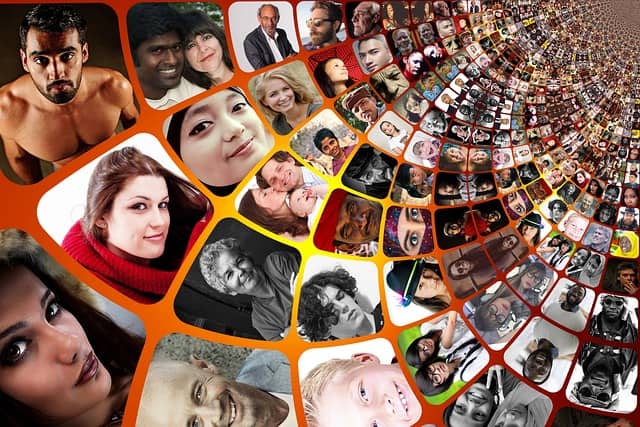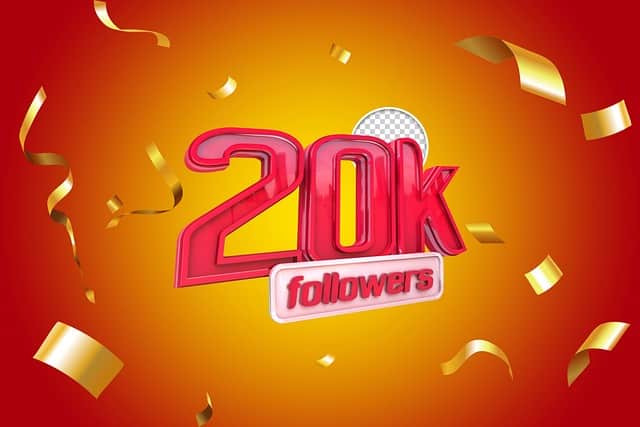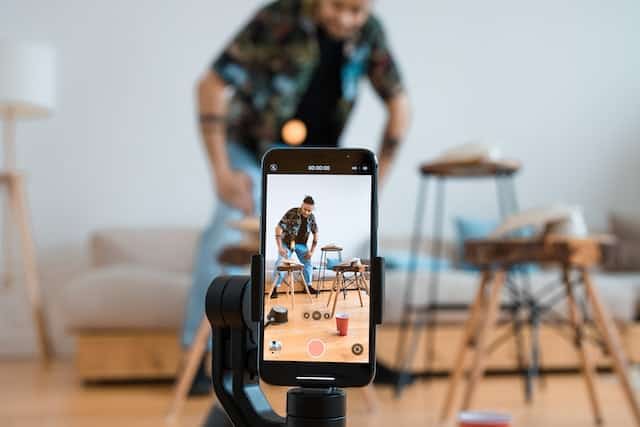Social Media Marketing Using AI: 12 Easy Tactics

Internet marketers love social media marketing for leveraging their business. It allows them to expose their brand and offers to a larger audience and generates targeted traffic at zero cost to their budget.
The only drawback to an online entrepreneur regarding social media marketing is that it is time-consuming. It requires you to consistently churn out large amounts of content, depending on your platforms.
Engagement is a component of this marketing strategy that is imperative to its success. That means you need to actively respond to your followers to show appreciation and understanding of your target audience.
Social media marketing is more overwhelming for online marketers because there are multiple platforms. Plus, each platform has a specific type of media format that is used, including text, images, and videos.
You need to spread your presence on different platforms to make the most of your social media marketing efforts. You must continually publish targeted content that gets engagement for your brand.
If you have struggled to get your strategy off the ground, see how artificial intelligence (AI) can play a vital role in helping you succeed with social media marketing.
Let AI Help You Pinpoint the Best Performing Social Media Marketing Platforms for Your Niche
Because there are dozens of social media platforms you must be selective about where you spend your time and effort.
You only want to be present on platforms where your niche audience is active. Artificial intelligence tools can help you choose your niche’s best social media sites. AI can also advise you on which apps to use to brand your business and send traffic to your sites and offers.
Which Platform & Audience Demographics
The first thing you will do is prompt the AI like this:
“Can you help me determine which social media platforms would be best for my niche, and how do you do that?”
Then ask it the following:
“What do you need from me to fulfill this request?”
It will respond that it needs the following types of information:
- Your niche
- Your target audience demographics
- Your target audience’s interests
- Your primary competitors
- Your campaign objectives or goals
- Your budget (if using paid social media)
If you don’t know some of this information, you can have AI find it out for you. But at the very least, you can give it your niche and overall goal in using social media, which is to get free traffic.
You can respond:
“All I know is my niche and goal. My niche is Internet marketing for newbies. I aim to drive traffic to my lead magnet opt-in page.”
Or, you can feed it as much information as you want, such as:
- Your niche – Internet marketing for newbies
- Your target audience demographics – men and women of all adult ages through seniors, parents, single and married, people with health or financial struggles, etc.
- Your target audience’s interests – learning how to make money online
- Your primary competitors – I don’t know, but people like Neil Patel
- Your campaign objectives or goals – to get people to my landing page to sign up for my list
- Your budget – zero dollars
The results will vary across different AI tools. For example, Bard might include the suggestion of LinkedIn in their list, while ChatGPT includes Twitter and Quora. But we don’t want any of those.
Check Your Platform Preferences
If you have preferences for social media platforms, and you simply want to know if it’s a viable platform for your niche, you can ask AI by saying:
“I want to use YouTube, TikTok, Facebook, Instagram, and Pinterest – are those viable platforms for my niche?”
It will respond with an answer and explanation of why it’s a good choice and what you could do (in summary) in your niche on those platforms. If you ask the ChatGPT this question:
“What isn’t a good social media platform for my niche”
– it will tell you that no social media platform is outside your parameters.
However, if you go over to Bard, it will tell you that platforms like Snapchat (due to the young audience) and Reddit (due to the news aggregation slant) may not be a good fit for your efforts, among others.
Now it might advise you that TikTok tends to skew younger, and while it may have a younger overall audience, the older audience is growing. You can ask AI:
“What are the current statistics about the demographics using TikTok – specifically anyone over age 30?”
Ensure you ask a tool like Bard, which has current results and not ChatGPT. Bard will admit that in 2022, over 20% of its users were over 30. So if there are 30 million active daily users, that’s an audience of 6 million per day.
It also tells you that more users over 30 are females in the United States and spend almost an hour on TikTok daily. The fact that this number is growing means it’s a great platform to get in on – so do your research and ask AI for details about the demographics; don’t just take its word for it.
Your AI Tool Can Advise You on the Type of Content to Create for Maximum Engagement
If you know which social media platforms you should be marketing on, AI can advise you on the content types you should create for those platforms.

So let’s prompt your tool like this:
“Regarding content types, for my niche of Internet marketing for newbies, what type of content should I create for Facebook, Instagram, Pinterest, YouTube, and TikTok?”
It will reply back with an excellent list for you for each one, but here’s the one for Facebook:
- Educational posts with tips and tricks for newbies to learn about Internet marketing
- Share blog posts, infographics, and other valuable resources related to Internet marketing
- Host Q&A sessions or Facebook Live events to answer questions and provide advice
- Share customer success stories and testimonials to showcase the effectiveness of your strategies
- Create polls or surveys to engage with your audience and gather feedback
Content Type By Platform
ChatGPT gives you detailed information for each platform, according to the type of content the audience is used to absorbing. For example, Instagram has completely different suggestions, such as Instagram stories, behind-the-scenes glimpses of your business, etc.
For Pinterest, it’s very specific about creating boards and what you should share as pins.
On YouTube, it’s specific about sharing optimized videos that showcase the effectiveness of your strategies.
And on TikTok, it has specific information about participating in challenges that are trendy on this social media app and tying the Internet marketing or business topic into them. It also discusses collaborations with TikTok influencers.
Bard Comes back with generic information for all social media platforms, so you have to prompt it again to give you content types for each platform individually. When you do that, it comes back with a plan for each platform.
It explains that Facebook is good for posts, live videos, events, and groups.
For YouTube, it talks about regular videos, live streams, having a playlist, channel memberships, etc.
Most Effective Content Types
Another thing you can do is have AI tell you which of those content types is most effective. So we will prompt AI like this:
“On each of those platforms, what content type gets the most engagement for the Internet marketing niche?”
It will tell you that on Facebook, videos generate more views and shares than other types of content.
On Pinterest, infographics do very well.
On YouTube, how-to videos and tutorials are popular,
and on TikTok, quick tip videos and trends knock it out of the ballpark.
You Can Have AI Develop a Social Content Calendar for You
Social media content creation can be time-consuming. You want to plan enough time during your day to contribute to a consistent presence on whichever social media platforms you select.
The time you develop may depend on whether or not you are using AI also to create the content for you – or if you are writing it yourself.
You can use AI to help you map out a publishing calendar for your social media platforms.
Post Frequency By Platform
We first want to find out how often we should post on each platform and at what time our content will be received well and generate the best response.
Let’s prompt AI like this:
“I want to develop a social media content calendar for Facebook, YouTube, TikTok, Instagram, and Pinterest for the Internet marketing niche geared toward newbies. How often should I publish content on these platforms, and when should my content go out for the best engagement?”
Both Bard and ChatGPT give good answers, but ChatGPT is more detailed. Bard is vague, telling us a “good rule of thumb is to post at least once a day on Facebook, Instagram, and Pinterest and more often on TikTok and YouTube.”
Post Times By Day
It’s still vague regarding timing, with answers like: “Facebook: Post during the workday when people are most likely to be checking their newsfeeds.” The workday is at least eight hours long, which doesn’t narrow it down much for us.
ChatGPT is very detailed. It tells us that we should post one to two times per day, three to four times per week, on Facebook between 1:00 to 3:00 PM on weekdays, with weekends having a slightly higher engagement rate.
For YouTube, it says we need to post at least once per week at the same time on the same day, and consistency is vital to building a loyal following.
On TikTok, it says you need to post at least once daily, between 6:00 and 10:00 AM or 7:00 to 11:00 PM on weekdays, with weekends having a higher engagement rate.
Instagram is a platform where we should post one to two posts per day, five to seven times per week between 11:00 AM and 1:00 PM on weekdays, with Wednesdays having the highest engagement rate – which is a precise detail to know.
For Pinterest, it tells us to pin at least three to four pins daily between 2:00 and 4:00 PM and 8:00 to 11:00 PM on weekdays, with Saturdays being the specific day for the highest engagement.
These AI tools are just going off the information they can gain online. Your post may work better at different frequency levels (less or more), on different days, or at different times.
Post Publishing Schedule By Day By Platform
You still need to pay attention to your analytics and not just take AI’s word for it.
The next thing we need to do, based on what it gave us in terms of publishing schedules, is ask it to map out a publishing schedule for us for each platform.
We will prompt it like this:
“Based on the information above, I’d like you to create a weekly social media content calendar for me showing me what days and times (if multiple times per day, show that) I should be posting on each social media platform. Start the week on Sunday.”
It gives us the following schedule, and this is perfect for us to use with Hootsuite or another social media management tool because we can schedule it ahead of time:
Sunday:
Facebook: Post at 1 pm
Instagram: Post at 12 pm
Pinterest: Pin at 2 pm
Monday:
Facebook: Post at 10 am and 3 pm
YouTube: Post a new video at 2 pm
TikTok: Post at 8 am and 7 pm
Tuesday:
Facebook: Post at 2 pm
Instagram: Post at 10 am and 3 pm
Pinterest: Pin at 11 am and 6 pm
Wednesday:
Facebook: Post at 9 am and 1 pm
YouTube: Post a new video at 2 pm
TikTok: Post at 7 am and 8 pm
Thursday:
Facebook: Post at 11 am and 4 pm
Instagram: Post at 2 pm and 7 pm
Pinterest: Pin at 10 am and 2 pm
Friday:
Facebook: Post at 2 pm
YouTube: Post a new video at 2 pm
TikTok: Post at 9 am and 4 pm
Saturday:
Facebook: Post at 12 pm
Instagram: Post at 11 am and 5 pm
Pinterest: Pin at 1 pm and 7 pm
See how specific it is in helping you plan weekdays versus weekends at specific times? That was ChatGPT. For Bard, it gives you a specific result with example content such as:
Sunday:
Facebook: 10 AM – Blog post about the basics of Internet Marketing; 2 PM – Live video about how to create compelling social media campaigns.
AI Suggestions For Post Topics By Platform
Now, you want to prompt AI to help you fill that content calendar with topics and types of content for each platform.

We will ask it to help us fill the days out with content ideas, but only one day at a time.
Because it’s providing multiple platforms for you, and you have limited space, chances are it will get cut off if you try to do all platforms for an entire week at once.
Let’s prompt ChatGPT like this:
“With my niche being Internet marketing for newbies, come up with post ideas that include the topic and content type for Sunday’s posts on Facebook, Instagram, and Pinterest.”
It will come back with an exact topic for your calendar as follows:
Facebook:
Topic: The Basics of Affiliate Marketing
Content-Type: Educational post with tips and advice on getting started with affiliate marketing for newbies.
Instagram:
Topic: Top 5 Social Media Platforms for Newbies
Content Type: Infographic with a list of the best social media platforms for newbies and tips for each platform.
Pinterest:
Topic: 10 Easy Email Marketing Tips for Newbies
Content-Type: A long-form post with step-by-step tips for newbies to improve their email marketing campaigns and eye-catching graphics and images.
Now you can create those posts yourself, or as we’ll cover in the next section, have AI do the work for you.
But go through each day of the week and have it map out topics – always ensure they’re a good fit for your target audience.
AI Can Create Your Social Media Marketing Campaigns or Map It Out for You
Now that we have a social media content calendar mapped out, we can either use AI to create that content for us – or just have it tell us how to create it ourselves. So let’s look at the difference.
If you know you want to put your own spin on the content and ensure that it has your tone and style for your audience, you can simply prompt AI like this:
“I will create the Sunday Facebook post titled: The Basics of Affiliate Marketing. It should be an educational post with tips and advice on getting started with affiliate marketing for newbies. Tell me what types of tips and advice I should discuss.”
It will give you brief ideas such as these:
1. Choose a profitable niche: To succeed in affiliate marketing, it’s essential to choose a niche that’s in high demand and has the potential to generate significant income.
2. Select the right products: It’s essential to select the right products to promote as an affiliate marketer. Focus on products that align with your niche and that your target audience will likely be interested in.
Social Media Marketing Posts Outlines and Content Creation
You can then take those notes and know what you want to be included in the content. You can even have it provide an outline for you if you want to work from that. But if you want it to create your content, you will deliver a different prompt.
You’ll say:
“I want you to create the Sunday Facebook post titled: The Basics of Affiliate Marketing. It should be an educational post with tips and advice on getting started with affiliate marketing for newbies.”
AI turns very casual because it is a social platform, as you should be on a social profile. It starts off like this:
“Hey, everyone, today we’re going to talk about the basics of affiliate marketing. If you’re new to this space, affiliate marketing is a great way to make money online by promoting other people’s products.”
Then it creates the content for you. You can go through the list and have it do all the content for you or just outline things.
Social Media Marketing Video Scripts
If it’s an image, such as an infographic for Instagram, ask it to create the text content for the infographic, advise you of what icon image should be by each item, and write some text for the actual post.
If it’s a video, you can have it map out the slideshow presentation and narration or a script – whichever you prefer.
Prompt AI like this:
“Give me a script to use for a YouTube video on the Topic: Introduction to Content Marketing for Newbies – Content-Type: A tutorial video introducing newbies to the basics of content marketing, including how to create effective content, how to distribute it, and how to measure success.”
Script Short-Form Videos for Social Media Marketing
It helps, if it’s a short-form video, to remind AI of what you want (including the time) like this:
“Script this TikTok video: 3 Tips for Effective Email Marketing for Newbies; Content-Type: A quick, 15-second video with three tips on how newbies can improve their email marketing campaigns, with a focus on engaging visuals and a catchy soundtrack.”
The script even uses standard TikTok verbiage. It starts out with “Hey TikTok fam,” which is what many on that platform say in their introductions. The familiar greeting helps you blend in with the crowd on that platform.

When the item it gave you is a video, ask it to script or storyboard it. If it’s a video, ask it to include the text and image info. If it’s a text-based post, you can just ask it to write it (and if you want to use an image to stand out in the feeds, ask what would be a good choice).
Then schedule this content after personalizing it and let it automatically go out on your behalf so that you keep a routine and consistent schedule with your followers on all social platforms.
Your Favorite AI Tools Can Optimize Your Social Presence
Artificial intelligence tools can help you optimize your social media presence. From your actual profile to the content you post, it can assist you in maximizing your use of these platforms.
You can ask AI for general optimization tips for specific platforms like Instagram. Those tips include things about your profile picture, bio area, username, etc.
Also ask your AI tool to give specific optimization tips for your existing profile. It will ask for your profile name; as long as it is public, it can offer some tips.
For example, it will advise you on whether your username is relevant to your niche, an example of what keyword-rich bio text you should have, etc.
You can also feed it your existing content (or the content you had it create) and have it help you optimize it. Just ask AI:
“How can I optimize this Instagram post?”
Then paste the content of the post and a description of the image.
AI might come back with a list of hashtags you should consider using in your post, which will be ready-made so that you can copy and paste them into your social media content.
It also might tell you that you need a compelling call to action.
So it will write several ideas for you, and you can pick and choose among those or mix and match something until you get the suitable CTA you want.
Get AI to Be Your Advertising Assistant for Social Media Marketing Campaigns
While the AI tools cannot log into your social media ad management area and run your campaigns for you, they can help you create effective campaigns based on the social media platforms that you want to run them on.
We will pretend we have an eBook called: A Newbie’s Step-By-Step Guide to Internet Marketing Success. We will have AI create ad campaigns on various platforms for us.
But first, we want to prompt it by asking what it needs from us to create the ad campaign.
It will tell you that it needs to know what your goal is, who your target audience is, what your budget is, what ad format you prefer, what your USP (unique selling proposition) is, and what your brand messaging is.
Craft Social Media Ads With AI
Again, you can either give AI this information yourself or have it help you create these elements before it begins to craft the copy for you. You might prompt it like this:
“Create a Facebook ad for me for an eBook called A Newbie’s Step-By-Step Guide to Internet Marketing Success. My audience is any man or woman who wants to make money online but doesn’t know how. I’ll be sending them from the ad to the sales page. Create a video ad script and storyboard for it, and give me any other information I’ll need to make my ad campaign successful.”
It will give you the visuals and narration that should be in the ad, which includes a call to action and other tips on making the ad campaign successful.
Again, you can have AI write text copy for a paid ad, script your videos, or help you design your ad campaign.
If you run an ad and have data results, the tool can tell you how to improve by tweaking your ads to perform better.
Have AI Be Your Company Spy to Help You Dominate Over Competitors Social Media Marketing Campaigns
Internet marketers often use the word spy; what they really mean is analyze. They’re not stalking anyone. But if you ask AI this prompt, it will tell you that it cannot spy on people:
“Can you spy on competitors for me on social media and tell me how to dominate their efforts?”
Instead, it will tell you what it can do for you, which includes:
- identifying who your competitors are on social media,
- analyzing their social media presence for engagement and growth,
- identifying their strengths and weaknesses,
- pinpointing opportunities for you, and
- helping you develop a strategy
Find Top Social Media Marketers in Your Niche
You can ask for a list of your topic’s top niche marketers on social platforms. For example, Neil Patel’s name often comes up for Internet marketing. So then you can ask AI which social media platforms he’s most active on.
It will tell you he’s active on Facebook, Twitter, LinkedIn, Instagram, and YouTube. It also tells you what information he shares on each social media platform.
You can ask AI how often he posts on those platforms. It will tell you:
- he typically tweets multiple times per day
- posts several times per week on LinkedIn
- a few times per week on Instagram,
- and a new YouTube video at least once a week
But it also notes that the frequency of posts on social media by this particular marketer depends on his current projects and priorities.
Identify Top Marketers Strengths & Weaknesses on Social Media Platforms
Next, you can ask AI what his strengths and weaknesses are on social media.
It will tell you what he is known for regarding expertise and where his strengths lie.
These include:
- sharing valuable content
- engaging with his followers, and
- establishing himself firmly as an authority in this industry
AI identifies weaknesses, including not sharing content from other sources and criticizing that his content can be repetitive or overly promotional. It does add a note that his strengths far outweigh his weaknesses regarding social media.
You can even ask AI to identify how to fill a gap where those competitors could be weaker.
When you ask about Neil Patel, for example, it tells you that he primarily focuses on SEO, so you could fill a gap by covering other traffic sources such as social media marketing, email marketing, and influencer marketing.
Launch Exciting Contests That Increase Brand Awareness and Sign-Ups
Social media profiles often have contests to help increase brand awareness and boost your sign-ups and sales indirectly. AI can help you develop contests.
You can run sweepstakes, host an image or video contest, have a caption for this contest, post a trivia contest, announce a user-generated content contest, and more. So you might prompt AI like this:
“I want to run a user-generated content contest for my internet marketing for newbies’ social media profiles. Tell me what the contest should be, write it for me, and what are some idea prizes?”
It will give you this idea:
Contest Theme: Show Us Your Marketing Story
Objective: Encourage your followers to share their marketing journey or success story with you and your community. This can include any success or lessons learned in internet marketing.
How to Enter:
- Follow our social media account(s).
- Create a post or story sharing your marketing journey or success story.
- Use the hashtag #MyMarketingStory and tag our account in the post/story.
- Ensure your profile is public so we can see your entry.
Prizes:
- A free consultation with an internet marketing expert.
- A copy of our eBook, “A Newbie’s Step-By-Step Guide to Internet Marketing Success.”
- A social media shoutout from our account(s).
- A marketing tool kit with resources to help you grow your business.
Use AI’s Input on Multimedia Ideas to Supplement Social Text Content
One beneficial thing is to use AI to supplement your posts with whatever other media format you can include. For example, you might prompt AI like this:
“I have a Facebook text post called The Basics of Affiliate Marketing which is an educational post with tips and advice on getting started with affiliate marketing for newbies. I’d like to include some sort of multimedia so it stands out in the feeds – either an image or video. What ideas do you have for me?”
It will advise you that you might want to include an infographic that
“visually outlines the steps involved in getting started with affiliate marketing, such as finding a niche, researching affiliate programs, and promoting products.”
Or it might recommend that you include
“a short, animated video highlighting the post’s key points. You could include animations or graphics that help illustrate the concepts you’re explaining in the text post.”
Get Insight On Images to Use
It will even give you insight into what images to use, such as:
“images of money or charts and graphs to help convey the financial potential of affiliate marketing.”
Suppose you want to use a particular media format, like an explainer video. In that case, you can tell AI the following prompt:
“I want to create an explainer video for this Facebook post. Can you script and storyboard it for me?” (Then paste the post).
It will tell you when to have music and visuals on screen, when to speak, when to have text appear on screen, and more. It will also tell you which visuals to show, such as “show visuals of engaging with followers and creating a sense of community.”

You can do the reverse, too.
If you have a video for YouTube or an image on Instagram, ask AI to help you write a compelling text-based description to include with it and add more hashtags for you.
Get AI to Identify Social Influencers and Pitch Them for Collaborations
If you want to network with other marketing influencers on social media platforms, go to a current AI tool like Bard (since ChatGPT is stuck in 2021) and ask it the following:
“I need to work with influencers on TikTok who teach people how to make money online. Who do you recommend?”
You can even narrow it down and ask AI to tell you who the top female influencers are on a platform. You can even ask who teaches a specific topic, like making money on Etsy.
Always double-check to ensure the account names are still active and the number of followers AI told you to match what you see on the site or app.
Sometimes it makes things up, or the information may have become outdated.
You can even go online and find a top influencer, feed the data back to AI, and ask about the influencer like this:
“Can you tell me what this account mostly teaches on TikTok? @hustlewithdonny”
The AI (Bard) will tell you that he teaches people how to start and market their own businesses, allowing them to make money online.
Pitching Social Media Influencers on TikTok
Then it gives you a list of topics. If you want it to, AI can help you pitch the influencer.
Simply tell it what you want it to do like this:
“I want to pitch Donny and see if he’d like to collaborate with me to get my book called A Newbie’s Step-By-Step Guide to Internet Marketing Success in front of his audience. What’s a good idea that he might agree to? Give me some examples.”
It will come back with ideas for a joint book launch where you cross-promote each other’s products. He might agree to a giveaway of it to one of his followers. He might want to do a book review or even have you on as a guest.
Next, tell AI which option you like and prompt it to write the pitch like this:
“I like the joint book launch idea. Write a pitch for me to send him and make it casual and personal.”
AI will craft a letter about what a big fan you are and details the joint book launch promo idea. It even tells Donny how flexible you are on the details, so all you have to do is sign your name and send it off.
Allow AI Chatbots to Handle Customer Service Inquiries for You
If you’ve ever messaged a brand online before, chances are, you’ve encountered a chatbot.
Many companies have these set up to prescreen customer service inquiries and see if the request needs to be elevated to a human.
These can be on commerce sites like Amazon or social media platforms, such as when you private message a brand on Facebook and immediately get a response from the chatbot.
They can be programmed to provide answers to common questions.
This gives you a more hands-off approach to customer service issues that aren’t at a higher level of concern.
Chatbots for Social Media Marketing
You can find different types of chatbots for your social media accounts. They all have a variety of features and price points.
If you’re new to using chatbots, don’t get something complex and confusing – keep it simple.
Ensure you go through the instructions carefully and optimize the chatbot to perform as well as possible so that it’s not evident and lacking, which will annoy and infuriate people.
You also need to make sure you monitor the effectiveness (or lack thereof) when it comes to your chosen chatbot.
If it’s causing people to abandon your brand, it might be better to use a static message that you’ll get back to them.
Or hire someone to provide the human touch to your business when you’re otherwise busy.
Use Social Listening AI Tools to Monitor the Market for Opportunities
Instead of closely monitoring the buzz about your brand online, you’ll want to use AI as a social listening tool.
It will monitor the praise or complaints about your brand. Then it will deliver information to help you learn more about your demographics and niche market.
You’ll find out information such as hashtags being used or trending. You’ll see some AI tools that tell you when people speak positively (or negatively) about your brand.
If there’s a sudden spike in mentions, you can quickly address it.
The social listening AI tools also keep tabs on who’s an influencer in your niche so that you can begin networking with people with a rising profile on specific social media platforms.
Hootsuite Insight for Social Media Marketing
Some tools, like Hootsuite Insights, give you real-time information.
And it can tell you things like where you should be spending your ad budget, who to partner with, what time to launch, and more.
The sentiment analysis can create keyword clouds to see what people commonly say about your brand.
Consequently, when you can see how your brand is perceived, you can tweak your branding if it needs improvements or fuel your content with more of what’s working well for you.
All in all, artificial intelligence is a great way to streamline your branding across many different platforms.
It serves as a great way to save time (and money) and cater to the needs of your audience.
However, you can use AI as much or as little as you want in your social media marketing efforts.
It can do some preliminary research and brainstorming for you or take over the entire content creation process.
Of course, it’s always best to have a close hand in everything you create for your business or brand. Most importantly, if you have an AI tool to create content for you, make sure you add your own personalization and style so that it doesn’t sound so sterile.






